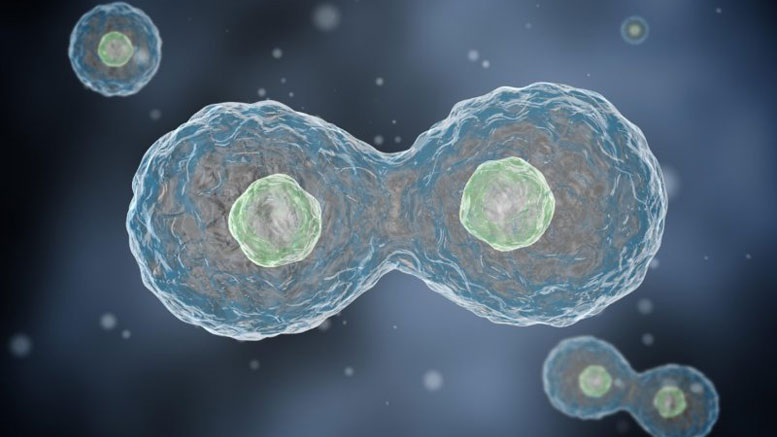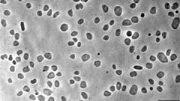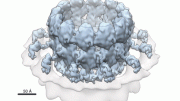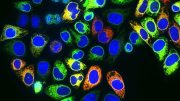
Researchers at the University of Copenhagen have identified the process of how human cells regulate the creation of new cells, and how it can be manipulated to kill cancer cells.
In a newly published study, scientists detail how they can manipulate the rhythm of DNA replication and suggest how this can be used in the future to kill cancer cells.
Human cells divide and create new cells throughout life. In this process, a steady – even rhythmic – supply of DNA building blocks is needed to create new DNA. Now researchers from the University of Copenhagen are the first to show exactly how human cells regulate this process so it does not fail and cause illness. The researchers also show how they can manipulate the rhythm and suggest how this can be used in the future to kill cancer cells.
New DNA is generated in human cells from tiny building blocks called nucleotides produced by an enzyme called RNR. Until now, we have not fully understood how exactly the RNR rhythm and the presence of right amount of nucleotides are aligned with the pace of DNA replication.
Now, researchers from the Faculty of Health and Medical Sciences at the University of Copenhagen have mapped the flow and regulation of nucleotides. The flow follows the same rhythm as the replication of DNA does – and when it does not, the cells regulate the process to align the two.
“We can see that these processes follow the same periodic rhythm. We found a mechanism that instantly slows down DNA-replication when RNR, the nucleotide factory, gets out of that rhythm, but well before the nucleotide supply becomes critically low,” says Jiri Lukas Professor and Executive Director at The Novo Nordisk Foundation Center for Protein Research.
Building blocks catching up
The research groups led by Professors Jiri Lukas and Chunaram Choudhary found that the cell reacts to even small changes in the flow of nucleotides. If the production falters, a chemical signal consisting of reactive oxygen species (ROS) spreads the message to slow down DNA replication.
Their research paper; published today in the journal Science, reports that such communication between nucleotide supply and DNA replication speed is possible thanks to the fact that all sites in human genome that actively copy DNA contain a protein called PRDX2 that senses this chemical alert.
When this happens, the PRDX2 protein releases an accelerator called TIMELESS from the DNA, and this release slows down the pace with which cell cope their DNA. Slower DNA replications allow for the production of nucleotides to catch up and get back to the same rhythm with DNA synthesis. Because of this, there are almost always enough nucleotides to build the DNA, which in turn is critically important for copying healthy genomes without mistakes.
High speed kills cancer
This finding sheds light on several illnesses, but is especially important in relation to cancer. The researchers show that they can deactivate the chemical signal that alerts the cells to problems with nucleotide production. Under such conditions, cells cannot slow down the replication process, and the researchers propose that this would impede the proliferation of cancer cells because they are particularly vulnerable to a high replication speed.
“We found that cancer cells copy their DNA rather slow, because they have abnormal genomes, and replicating DNA has to overcome many obstacles. When we remove their ability to copy their genomes slowly, the cancer cells die because they cannot cope with too many bumps on their DNA templates,” says Kumar Somyajit, Post.Doc and first author of the study.
The study was funded by the Novo Nordisk Foundation.
Reference: “Redox-sensitive alteration of replisome architecture safeguards genome integrity” by Kumar Somyajit, Rajat Gupta, Hana Sedlackova, Kai John Neelsen, Fena Ochs, Maj-Britt Rask, Chunaram Choudhary and Jiri Lukas, 10 November 201, Science.
DOI: 10.1126/science.aao3172









Be the first to comment on "Scientists Exploit Rhythm of DNA-Replication to Kill Cancer Cells"